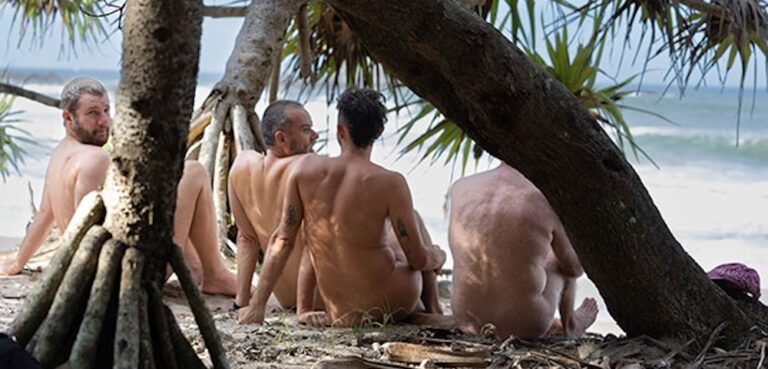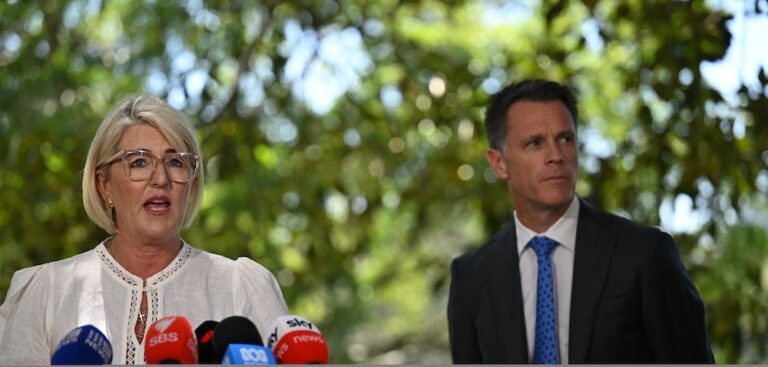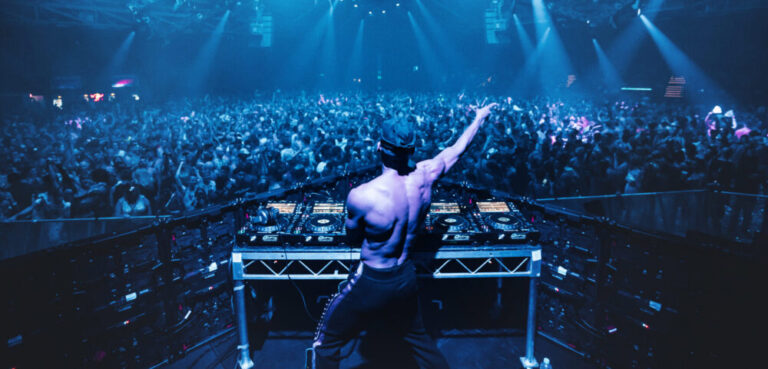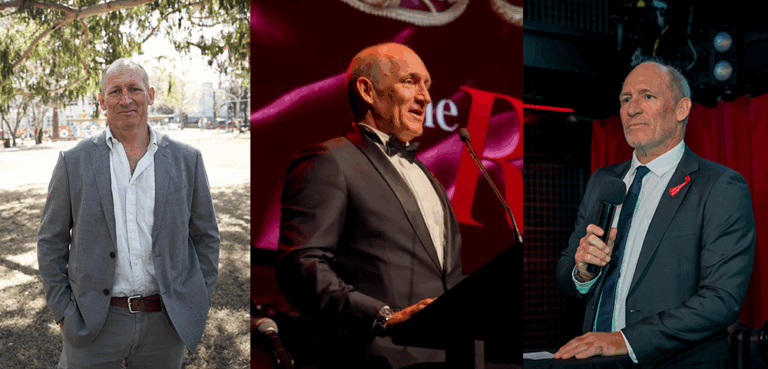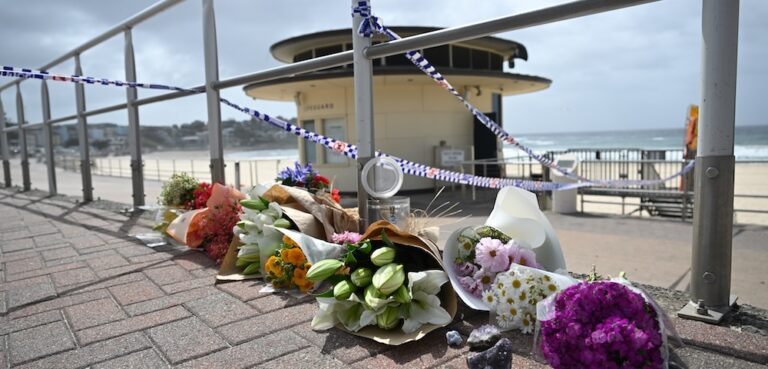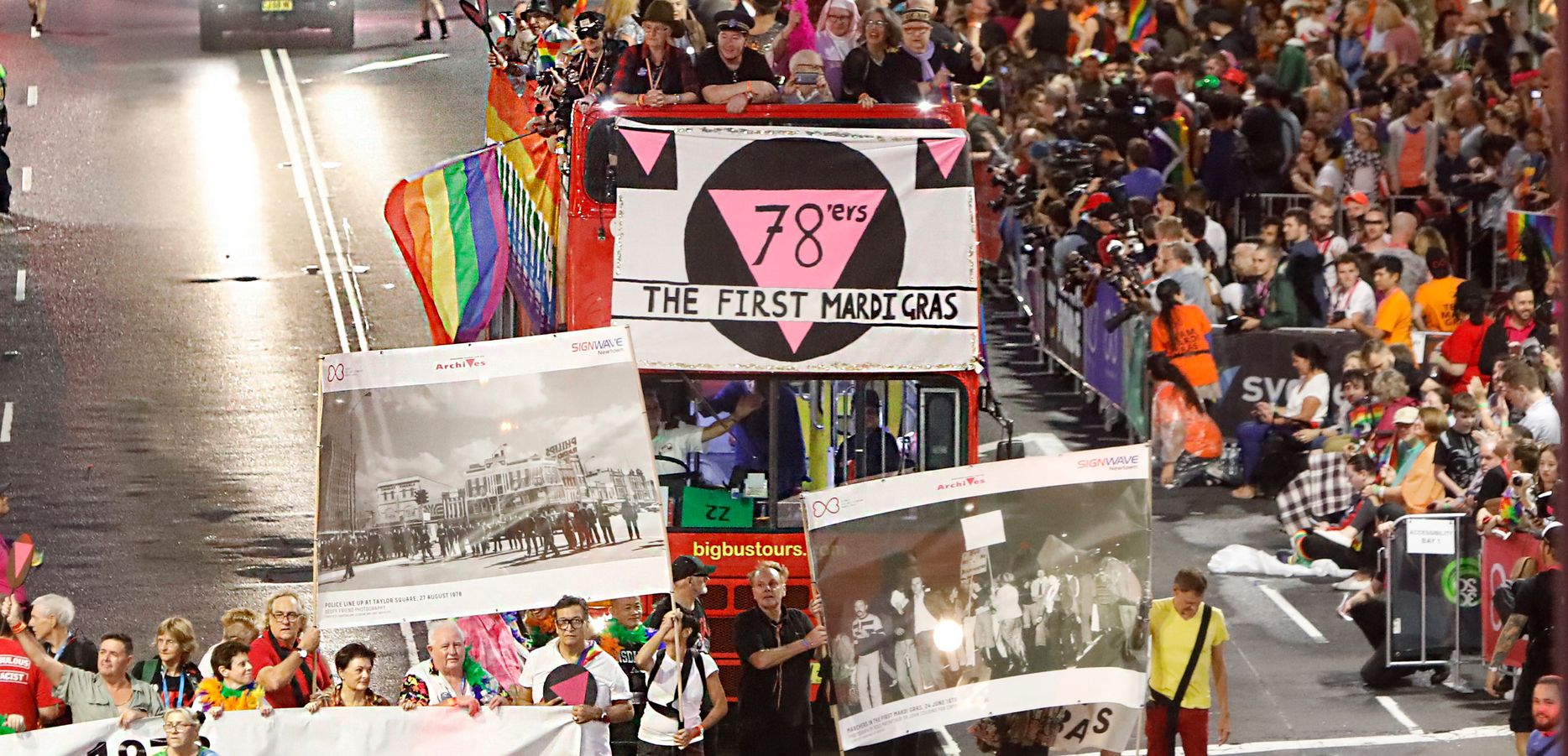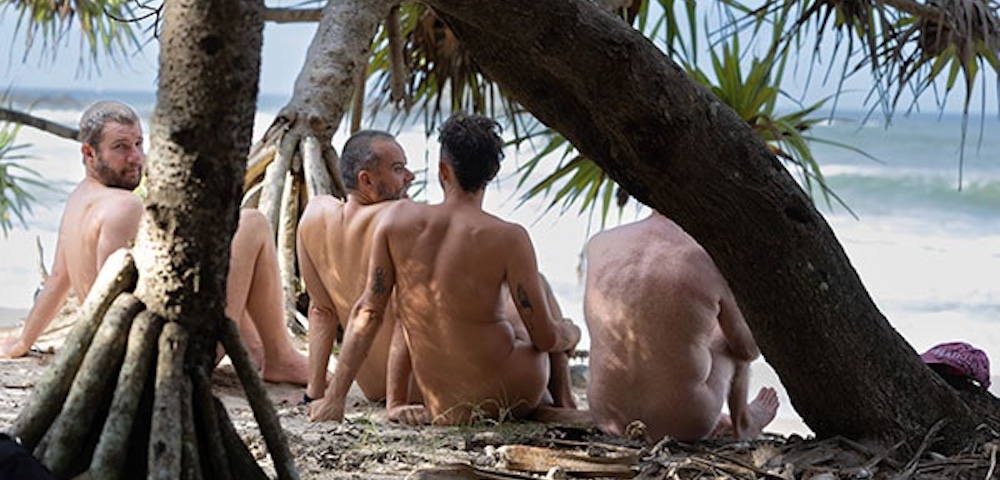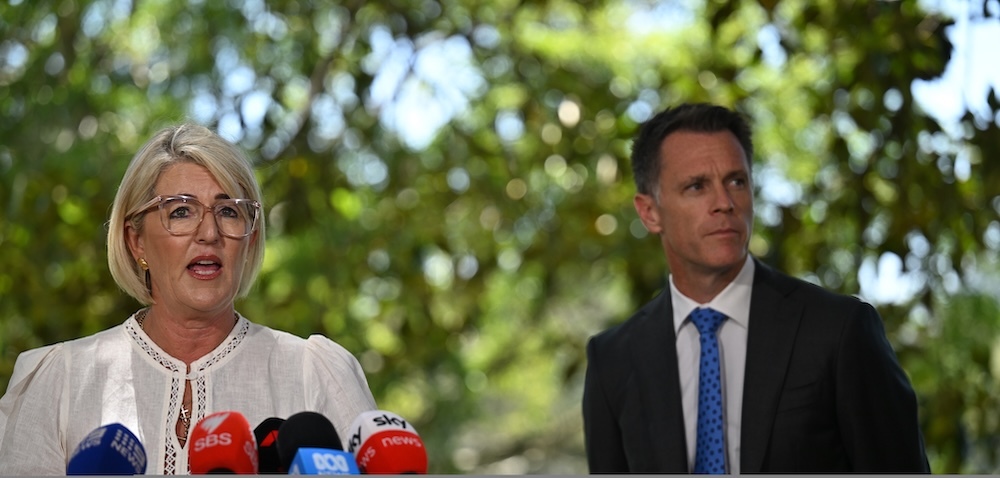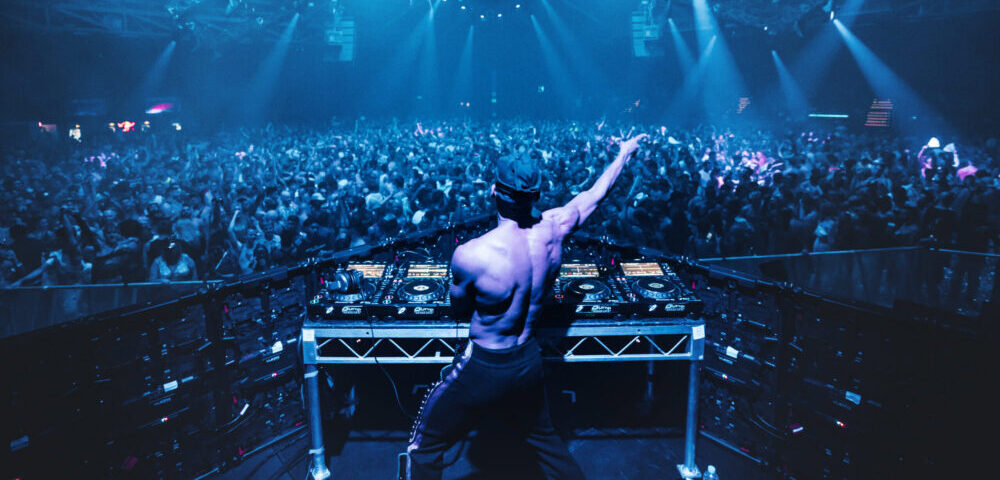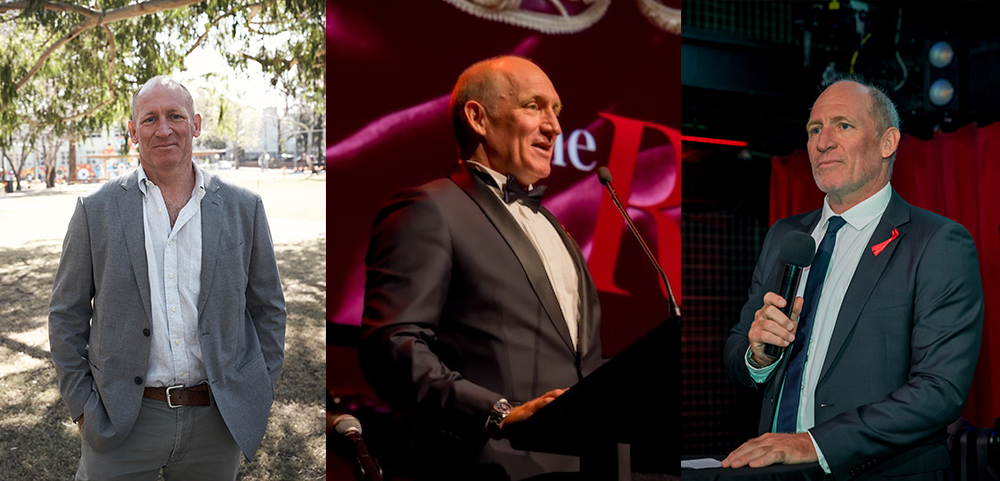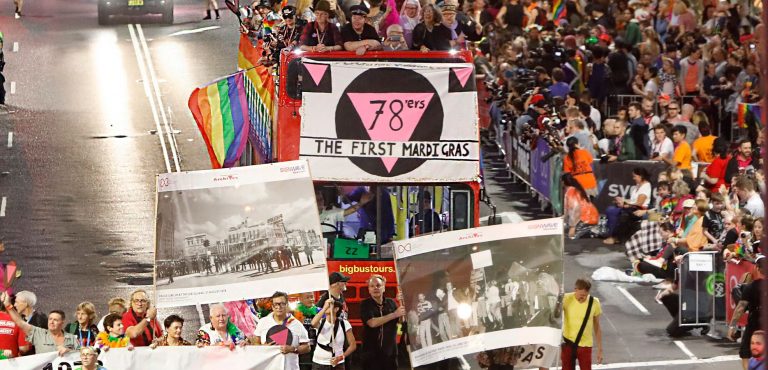
What is -˜the community’, anyway?
Not so long ago Mardi Gras was considered a kind of Gay Christmas, something to look forward to all year long. It was a chance for the whole community to get together and celebrate who they were at a time when society was less willing to accept sexual minorities. It was also an opportunity to show defiance in the face of HIV/ AIDS and draconian laws.
Things changed. Australian society became more accepting of gay men and lesbians. Sex education and new medication eased the HIV/ AIDS crisis. Gay and lesbian rights lobbyists achieved significant law reforms around the country. The community began to disperse and fragment, becoming lots of smaller communities that felt less of a need to get together once a year for a massive celebration.
Dr Kane Race, a lecturer at the National Centre in HIV Social Research at the University of New South Wales, sees a direct link between the changing nature of HIV/ AIDS and the rise and fall of Mardi Gras.
You can see a drop-off from the parties from about 1997 I think, which corresponds fairly closely to the changing nature of the epidemic, Race says.
Part of the experience of the dance party in the context of AIDS was that it was sacred. The shift away from a sense of collective crisis to a more privatised, individual experience with AIDS -“ and the possibility of this being your last Mardi Gras to the possibility of living another 20 years -“ changes some of the ritualistic elements of Mardi Gras.
Race sees two other social factors which correspond with the decline of Mardi Gras in the late 90s. The first is the internet.
It has had a radical effect on how gay relations are practised, he says. It’s changed the ways people seek all sorts of connections, including sexual connections. Today the internet is a key sexual venue, and this could be creating a drop in attendance at other social and community venues.
The proliferation of gays in the media from the late 90s onwards also had an effect, according to Race.
Part of the pleasure of the Mardi Gras parade was about flaunting. It was about the movement from private to public. So when you have a bigger saturation of gay images in public it would make sense that the parade isn’t quite as exciting as it once was.
So is there still a gay community to speak of? Gary Dowsett, associate professor at the Australian Research Centre in Sex, Health and Society (ARCSHS) at La Trobe University, considers today’s gay community to be split into three separate generations: the pre-AIDS generation, the AIDS generation and the post-AIDS generation. And each generation wants different things.
These three generations of gay community have quite different value systems and knowledge systems and understandings of what sex is, what same-sex desire is, what homosexuality is, what gay is, and what you expect out of your life sexually, he says.
Educated about HIV/ AIDS from a young age, the post-AIDS generation was brought up at a time when the gay community seemed a lot bigger and stronger than it actually was, according to Dowsett, who was ACON’s vice-president in the early 90s.
The image of the gay community as a solid, contiguous form was given quite a deal of credibility by the struggle against HIV, and the struggle about the decriminalisation that occurred in this country at the same time, he says.
I think it was less solid than it looked. In the heyday of Mardi Gras there was enough gravitas in the centre of it because of AIDS, because of the struggle for law reform, because of the Oxford Street precinct around that time. I think Mardi Gras was there for a period of time to support these things, but it wasn’t sustainable.
The focus of the gay community became blurred from the mid-90s when treatments made a huge difference to the urgency of the epidemic and law reform started happening.
The kind of thing you call the -˜gay community’ that the post-AIDS generation were coming out to was already dissolving, Dowsett says.
Dowsett’s colleague at the ARCSHS, senior researcher Michael Hurley, was arrested in 1978 while protesting against the arrest of participants in the first Mardi Gras march. He believes one of the social factors contributing to the falling attendances at Mardi Gras is the ageing population.
Lesbian, gay and queer populations are ageing at the same rate as everyone else and ask for different things from life now than 20 years ago, Hurley says.
Whether we like it or not, Mardi Gras as a cultural form is middle-aged and the children have flown the nest. Queers live differently [these days].
They value different ways of living: children, marriage, family. The general trend is toward integration with the mainstream rather than toward separate spaces. Gays and lesbians are assimilating. Identity is being configured increasingly loosely and incorporated into everyday lives that are not defined by difference.
There are exceptions to this, but those involved are less interested in large-scale spectacularity and more interested in small-scale, edgier, specific-purpose events that cater to much more specific pleasures.
Dowsett believes this is the exact reason Mardi Gras needs to become about lots of smaller events rather than a couple of massive ones.
I think New Mardi Gras has to do a radical rethink of what its purpose might be. If it wants to be continuous with the history of Mardi Gras itself, it’s got to have a celebratory purpose. It has to be a focus on a public statement of our right to be, our right to full citizenship and to live the way we want to, he says.
But I think it has to find different ways to celebrate instead of thinking the dance parties are the way most people celebrate. Some of us are too old to dance, or if we’re not we don’t want to dance all night long. The dance parties are organised around a particular vision of what dancing is. Not everyone wants to take drugs. The big dance thing needs to recede in importance and other things other people want to do to celebrate should be brought in.
Maybe the answer is for New Mardi Gras to start sponsoring some of those small scale kinds of celebrations, like the Gay and Lesbian Choir, so people can bring their kind of gayness to the big celebration.
But that’s just a thought.
Next week: we look at the Mardi Gras parade.
